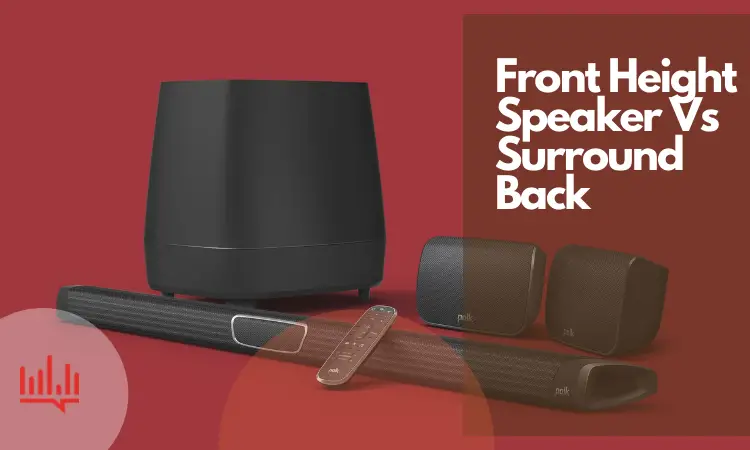Introduction
Even a few decades ago, analog was the way of technology. But with the rise of high-end computer-based audio systems, the scenario has changed. Digital volume control systems took over and have since been the benchmark of the industry.
Despite the massive takeover, the debate between digital and analog volume control still persists to this day.
Which performs best, digital or analog volume control?
Between digital and analog volume control, the analog system faces less resolution loss. Digital volume control systems create noise and distortion as you reduce the signal. In the analog system, the signal-to-noise ratio is well maintained, creating less noise than the digital volume control.
That’s the preview of the whole discussion. Sounds complicated? Then we invite you to read through our whole post until the end. We’ve explained everything in detail.
So, let’s begin!
Quick Comparison: Digital Vs Analog Volume Control
Being on the opposite spectrum, there’s a lot to distinguish between the two volume controls. Let’s start by taking a little glimpse of the differences in analog vs digital volume control.
| Aspect | Analog Volume Control | Digital Volume Control |
| Signal Degradation | Small | Larger |
| Noise ratio in reduced volume | Gets maintained | Gets worse |
| Loss in resolution | Small | Bigger |
| Signal to noise ratio | Less | Bigger |
Need more explanation of these terms? Then we hope you keep reading the discussion we’ve included in our next segment.
Detailed Comparison: Digital Vs Analog Volume Control
The volume control system in digital processors are implemented in both digital and analog domain. Both types of volume control systems have their own advantages and shortcomings.
Source: benchmarkmedia.com
So before deciding on either of them, it’s important to know about both systems. Let’s take a detour that will help you decide between both.
Digital Volume Control System (How It Works & Limitations)
The sound that we hear through our devices initially comes as a form of signal. Then it turns into some binary numbers that are represented through “word”.
These words come in different lengths. The lengths are calculated in bits like 16-bit, 20-bit, 32-bit, etc. So when you operate a digital volume control system, it depends on these bit values.
When you lower the volume in the system, the bits get lost in the process. As a result, loses more resolutions. With every 6dB decrease in the volume, the system loses 1-bit of resolution.
So reducing 30 dB is like losing 5-bits resolutions. The lower the volume setting will get the greater the resolution loss will be. Let’s give you a mathematical explanation.
Let’s say we pick a value of 30,003 in a 16-bit DAC. the bit value of it will be 0111010100110011. Now, let’s say you want to turn down the volume by -10dB.
To do that you’d have to multiply the binary bit value by -10dB. -10dB is 0.3162 in fractional value. So if you multiply them the result comes as 9487.7817.
But what the system does, is not take the fractional value. Instead, it takes an integer value of the multiplication. For this case, it would be 9488.
Although it seems the gap between the two results isn’t big. But the gap is 23ppm which isn’t negligible. Now, the more you reduce the lufs the greater this gap will be.
As the gap gets bigger the performance of the system will degrade as well. That’s because of the noise that’ll produce. Digital volume control system works on a fixed value.
It can’t use the fractional value we get mathematically and thus creates noise. With the gap being greater the noise will also be louder.
This is what makes LG quad DAC different than the DAP.
Analog Volume Control System (How It Works & Limitations)
Analog volume control passes the signal via a variable attenuator like a potentiometer.
Now, you might be wondering:
How does a volume control potentiometer work?
A potentiometer helps to control the voltage by adjusting the sliding contact on the resistance. It increases or decreases the resistance of by sliding to either point A or point B. The potentiometer basically works as a switched resistor ladder or an active electronic equivalent.
Using this component degrades the signal slightly. But the result comes better than the digital volume control. And for that, you’ve to look into the frequency domain of the sound signals.
What happens when the previous scenario gets implemented on the analog volume control system? If you run the frequency test in the analog domain you’ll find a different result.
As the volume is requested to turn down, the signal decreases. The noise will start to go down as well. It’s because the signal-to-noise ratio is properly maintained in the analog domain.
Even if you decrease the volume by a lot, the ratio will be maintained. Thus there won’t be noises like in the digital volume control.
Final Verdict: Digital Vs Analog Volume Control
The winner here is the analog volume control. That’s because it has a better noise floor than digital control. The signal degradation is also small, unlike the digital control system.
Resolution loss is also minimized in the analog volume system. Compared to that digital volume control suffers a lot of resolution loss. Because the signal-to-noise ratio can’t be maintained.
This draws a clear line as to why the analog system is better in comparison. But the thing is, we can’t restrict ourselves between either of the volume control system.
Source: audioappraisal.com
As the present technology demands, we got to use both volume control systems. It’s not like we can decide to choose one and discard the other. It doesn’t work like that.
We’ve to use both volume control systems simultaneously and make the best use of them. In many cases, digital signal is converted to analog volume control for better responsivenes, maintain resolutions.
While on the topic of converting, we have some incredible DAC converter to show you. These converters are the most popular options in the market and received tremendous praise in audiophile communities. Here, have a look:
| Image | Product | Price |
|---|---|---|
 | EASYCEL Audio Digital to Analog Converter DAC | Check Price |
 | PROZOR 192KHz Digital to Analog Audio Converter | Check Price |
 | eSynic 192KHz DAC Digital to Analog Audio Converter | Check Price |
These DACs does a really great job at producing lossless conversion from digital to analog signal. You should definitely try them out!
The good news is many well-designed digital volume controls are getting popular these days. Sure enough, we can add these improved systems to our collection.
There are many brands working to make better digital volume control systems. These improved systems have little to no degradation and resolution loss.
So, it would be definitely worthwhile to upgrade your digital volume control system. Surely, we’ll find better options in the future. But if you want a quick solution to this dilemma, here’s what you can do-
Put the digital volume control of your application to 100% all the time. If you need to reduce the volume, do it from the system volume. That means controlling the volume from the knob of your speaker or other sound devices.
Always keep the volume from the application to the maximum level. Whether it’s a gaming or audio application. By this, there won’t be any noise created in the digital control system.
The noise will be minimized if you reduce it from the analog system. And that’s how you get to utilize the best sound performance without much hesitation. But don’t go ahead breaking the headphone playing loud music.
FAQs
If you have more inquiries, this section might come helpful-
What is Attenuation?
Attenuation refers to the decrease in a signal’s strength. It can occur to both digital and analog-type signals. Attenuation is sometimes referred to as “loss”. It’s an obvious consequence of transmitting signals over long distances. It’s calculated in decibels per unit.
What Conditions Should be Met in Good Digital Volume Control?
For a digital volume control to perform well, certain conditions should be met. First, the system must be properly designed. It should use minimum of 24-bits word length. The D/A converter should have a good dynamic range. The peak value of its output should match the max output of the next device.
What Are the Determining Factors of Analog Volume Control’s Performance?
The crosstalk between different electronic items inside the IC determines the performance of Analog volume control. It also depends on the relation between noise and power consumption. The non-linear behavior in the electronic items is also responsible in affecting the performance of analog volume control.
Final Words
We have finished our detailed comparison guide. Now you can decide for yourself and go with either digital or analog volume control.
Although no volume control system is 100% perfect, it can still be improved. So look forward to the future updates that are yet to be introduced. Who knows, maybe we’ll achieve the perfect result with them.
Until next time! Stay blessed!



